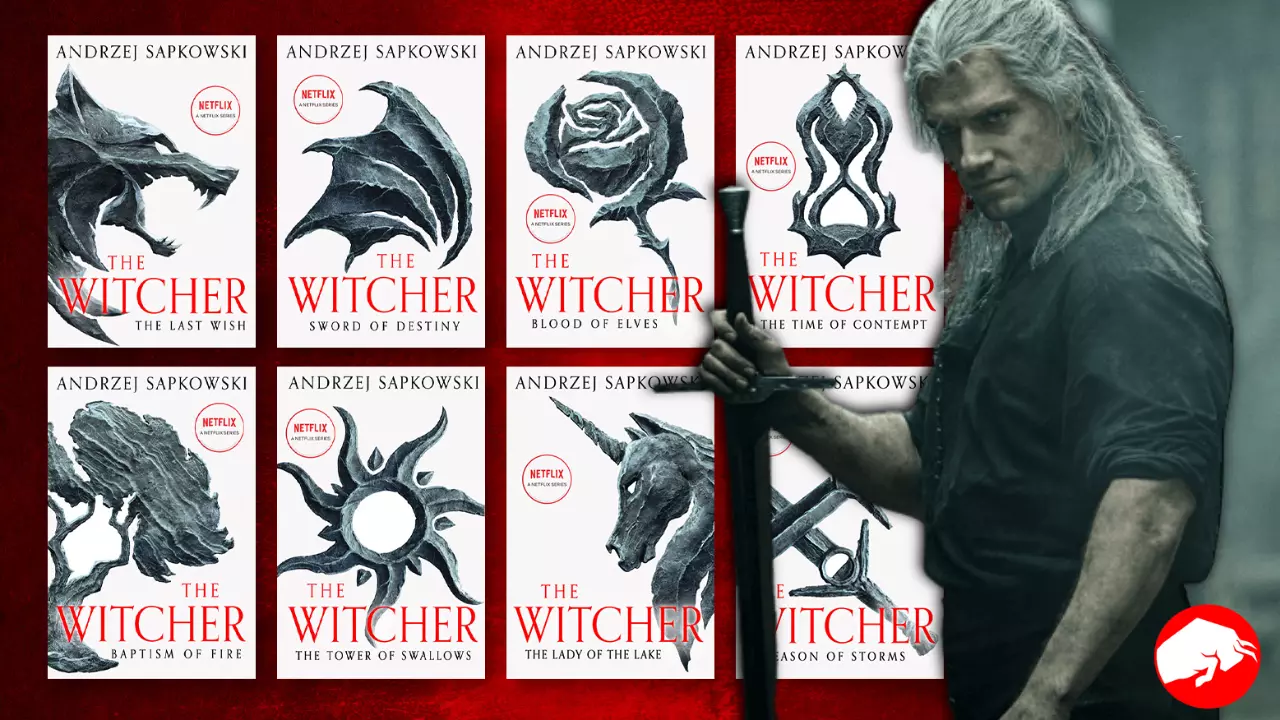The Witcher TV series has managed to win over fans across the globe by combining elements of fantasy and adventure with unique and captivating characterization. Every nuance of the show, every intricate detail, is carefully crafted to mirror the world depicted in the beloved book series.
From the elaborate, skillfully choreographed combat scenes that keep viewers on the edge of their seats, to the dazzlingly vibrant and richly detailed world-building that truly immerses viewers in the universe of The Witcher, every aspect of the show is a testament to the books.
As the show progresses and evolves, it’s worth noting how the third season, in particular, has managed to bring about some ingenious changes to the storyline. These tweaks and transformations, diverging from the book yet keeping true to its essence, have been met with enthusiasm and applause from the fanbase, who revel in the added depth and nuance they bring to the plot.
However, just like any adaptation, not every deviation from the source material has been successful. The Witcher season 3 has had its share of narrative missteps, points where the creators’ creative license didn’t quite hit the mark.
We are about to embark on a comprehensive exploration of both ends of the spectrum – the best and the worst alterations made in The Witcher season 3 compared to the books. We will dissect the commendable changes, appreciating the inventiveness and creative decision-making that enhanced the storyline.
Simultaneously, we will also delve into those changes that were perhaps less successful, where the deviation from the book’s narrative seemed to fall short of viewers’ expectations. So, buckle up and prepare for an insightful journey into the heart of The Witcher’s adaptation strategy for its third season.
Hit: Emphasizing the Familial Bonds of Geralt, Yennefer, and Ciri
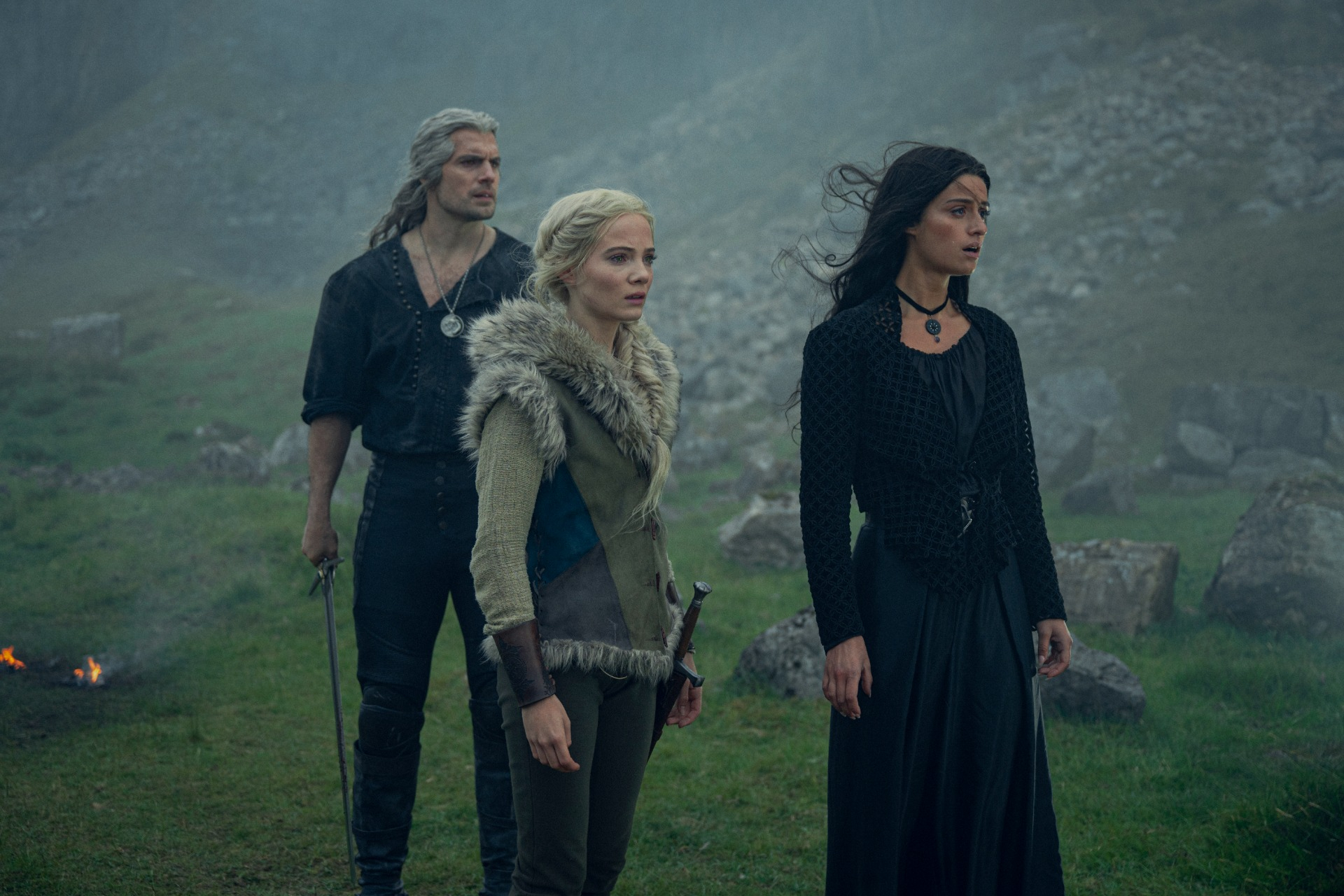
At the very heart of The Witcher book series lies the intricate and emotional relationship between three key characters – Geralt, Yennefer, and Ciri. This pivotal bond serves as a cornerstone, the true emotional backbone that underpins the entire narrative, making it incredibly engaging for readers.
Recognizing this emotional potency, the television adaptation decided to amplify this familial bond, lending it even greater weight and importance in season 3. This decision to dig deeper into the dynamics of their unconventional family and explore their bond in more depth proved to be an exceptional narrative move that was welcomed by fans and critics alike.
In stark contrast to the books, where Yennefer and Ciri spend a significant portion of the narrative in hiding away from the world, and Geralt is busily engaged in his dangerous mission to divert Rience’s attention, the television series decides to bring these three characters together right from the start.
From the very first episode of the season, the trio is united, and this unity remains a constant throughout the season. This approach provides an avenue for showcasing precious, touching moments of their interactions, giving fans a chance to witness the deepening of their familial ties.
The magnified portrayal of the relationship between Yennefer and Ciri is one of the most heartwarming aspects of this television adaptation.
When Yennefer, emotionally stirred, openly declares Ciri as her daughter in the series, it’s a moment of pure sentiment that touches viewers deeply. Such a poignant scene might have had less impact in the book series, primarily because at this stage their relationship isn’t quite as developed or explored.
The series’ choice to enhance and highlight this bond between a motherly figure and her adopted daughter, delving into their shared affection, makes for a truly compelling watch.
In fact, this increased focus on the emotional bond and deep love within this unique family unit stands out as the most rewarding deviation from the original books in The Witcher season 3. This change not only enriches the narrative, but it also creates a profound emotional connection for viewers, allowing them to become more invested in the characters’ journey and story.
By developing these familial ties further, the television series has managed to tap into a deeper level of storytelling that enhances the viewers’ experience significantly.
Miss: Valdo Marx and His Ill-Fitting Musical Troupe
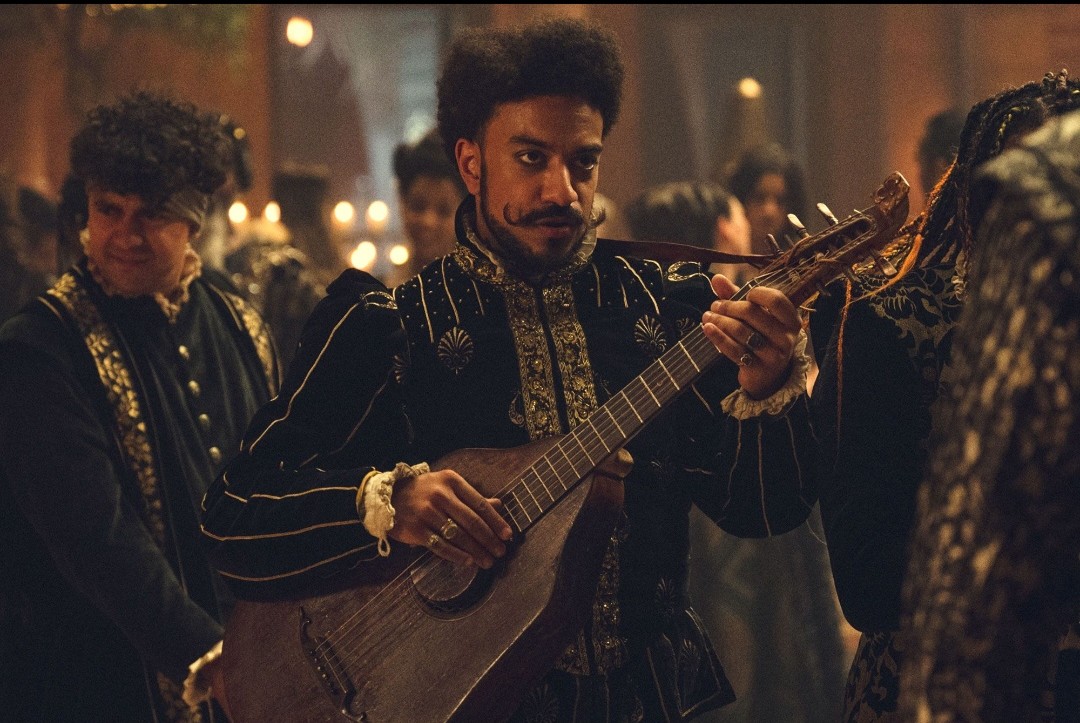
While the latest season of The Witcher has brought with it many captivating narrative twists and turns, there have been a handful of changes from the books that have not been received quite as positively by the viewers. One prominent change that has caused a significant amount of irritation among fans has been the introduction of the character Valdo Marx.
This new character, who is presented as Jaskier’s professional rival, is the leader of a musical troupe that is quite unlike anything else we’ve seen in the series so far. Their music stands out starkly against the usual soundscape of The Witcher series, feeling oddly modern and quite out of sync with the rest of the world.
For many viewers, the troupe’s performances come off as incongruous and make for somewhat cringeworthy viewing moments.
Our first encounter with Marx and his troupe comes during a scene set on a chain ferry ride. It is here that they first engage Geralt and Ciri with their unique brand of music, a jarring mix of sounds that feels completely out of place in The Witcher universe. Their music is catchy yet the lyrics, such as those in their song, “All Is Not As It Seems”, which is played during the Thanedd ball, are painfully obvious and lack subtlety.
What continues from the previous season is the palpable resentment between Marx and Jaskier. This ongoing rivalry is not, in itself, problematic. However, the issue arises when we consider the incongruous music style that Marx’s troupe brings to the show. Their performances feel like a confusing mishmash of Broadway-like sounds that seem to belong to a completely different era or genre.
This musical style feels uncomfortably out of place in the context of The Witcher’s traditionally medieval, fantasy universe.
The show attempts to handle this misstep with humor by having Geralt and Ciri show a clear detest for Valdo Marx and his troupe, mirroring the viewers’ own feelings towards this jarring musical element. Unfortunately, this aspect of the narrative doesn’t quite land as intended. Rather than creating a moment of shared humor, it only adds to the overall feeling of discomfort, emphasizing the fact that this particular change from the books has not been a successful one.
Ultimately, this aspect of the series feels more like a distraction than a contribution to the show’s unique world.
Hit: Introducing The Rats and Reshaping Ciri’s Interaction
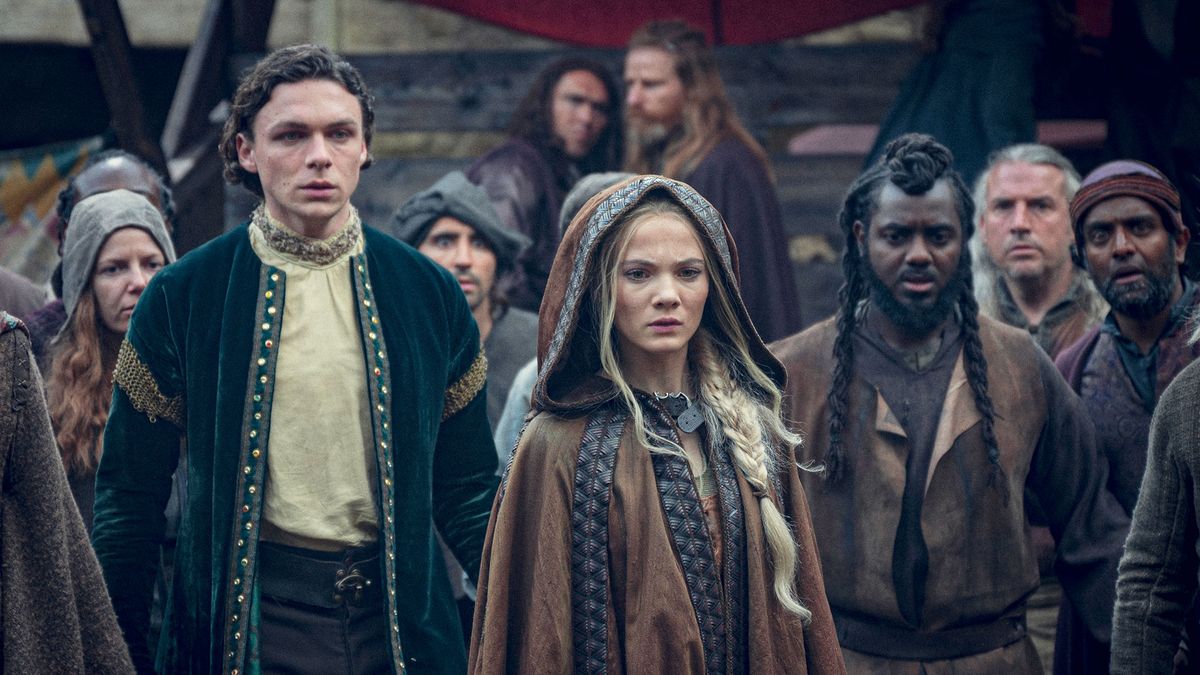
The second-best modification from the book series in The Witcher season 3 is undoubtedly the way it deals with the introduction of the Rats. These characters, who are essentially a band of young outlaws, play a crucial role in the book series. The TV show not only faithfully includes their introduction but also enhances their characters, giving them more depth and adding nuances that contribute to the complexity of the narrative.
In the original book series, the character of Ciri first comes into contact with the Rats after she and Kayleigh, one of the group’s members, are both captured by mercenaries. The rest of the Rats come to their rescue, and following this event, Ciri makes the decision to stick with this new group. She even goes as far as to adopt a new name for herself – Falka.
However, the book series then introduces a scene that has been the subject of controversy among fans. In this disturbing sequence, Ciri is subjected to two back-to-back sexual assaults – one by Kayleigh and another by Mistle, who is also a member of the Rats. This sequence is deeply unsettling and left many readers feeling uncomfortable.
The Netflix adaptation of the series chooses to handle this part of the story with more sensitivity. It takes a more delicate approach to the eventual relationship that develops between Ciri and Mistle. For instance, when Mistle makes her appearance during a fight with a basilisk in the third episode, it creates a shared history between her and Ciri.
This experience lays the groundwork for a potential romantic relationship to develop between the two characters in the future.
Importantly, season 3 concludes without delving into the distressing scenes involving either Kayleigh or Mistle. This decision could indicate that the creators of the TV show have chosen to omit these scenes entirely or, if they do decide to include them in future episodes, that they will be handled with more tact and sensitivity.
This measured approach to potentially distressing content reflects an awareness and consideration for the viewer’s comfort and shows that some changes can indeed enhance the storytelling.
Miss: The Overhaul of Thanedd Isle Ball
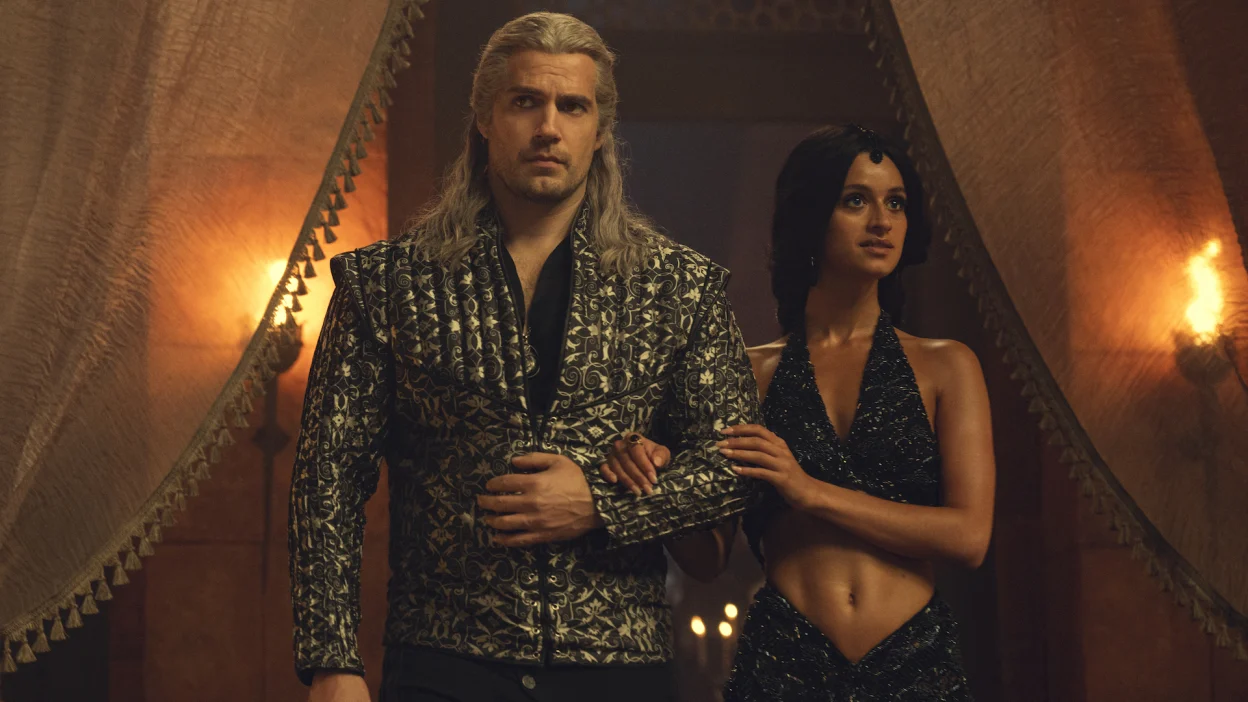
One of the most significant alterations in The Witcher season 3 when compared to the original book series involves the reinterpretation of a key event: the ball on Thanedd Isle. This event is depicted as a politically important summit in the original books. It is called by the character Vilgefortz and involves not only mages but also influential political leaders.
These attendees find themselves engaged in intense debates about their allegiances and loyalties. The heavy emphasis on politics during these conversations helps readers understand the various factions and their motivations, mainly when a sudden coup occurs.
Contrastingly, the Netflix show introduces an entirely different purpose for the Thanedd ball. Rather than being a summit filled with political tension, it is recast as a rallying call for unity among the mages. This unity is essential for protecting the Northern Kingdoms from the threat of Nilfgaard.
Additionally, the show turns the event into a murder mystery party. In this scenario, the characters Yen and Geralt try to decipher the identity of the mysterious employer of Rience.
Despite the change in the set-up, the event in the Netflix adaptation still culminates in the same bloody coup as in the books. However, the murder mystery party aspect, while undoubtedly entertaining and suspenseful, doesn’t have the same depth and complexity as the political intrigue detailed in the books.
While the murder mystery creates an engaging plotline, it lacks the strategic maneuverings and power plays that made the book’s depiction so captivating.
This drastic shift in the narrative can arguably be considered the second biggest misstep in The Witcher season 3 compared to the original book series. While it may have been a creative decision intended to offer a unique twist, it unfortunately ends up diminishing some of the rich political tension and intrigue integral to the original storyline.
Hit: Jaskier and Radovid’s Romance
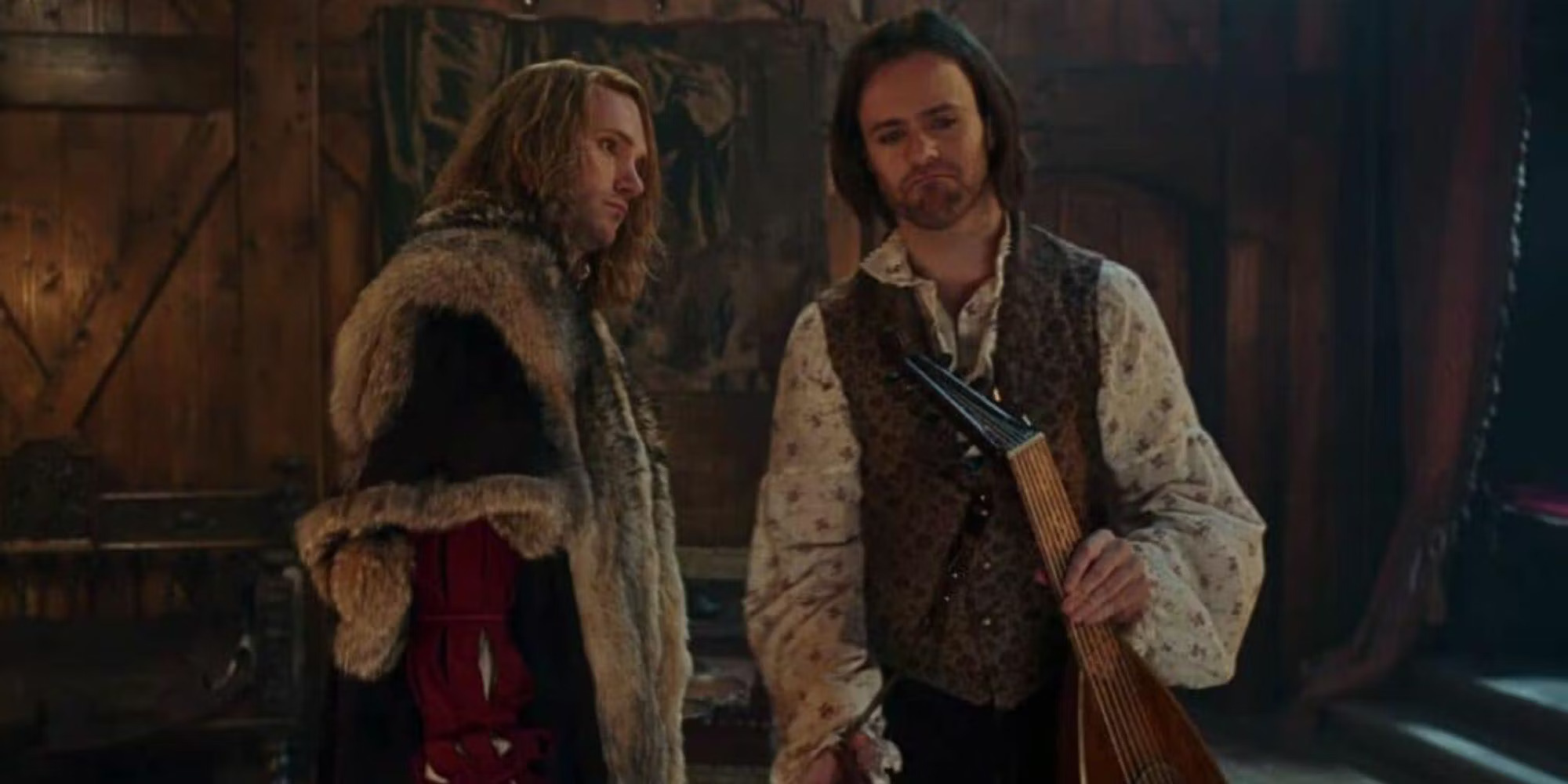
The Witcher season 3 brings an unexpected twist with the depiction of a romance between Prince Radovid and the bard Jaskier. This intriguing relationship, absent from the original book series, adds a fresh and unexpected layer of depth to the show. The introduction of this romantic plotline has undoubtedly caused a considerable stir among audiences, prompting much discussion and debate.
However, it cannot be denied that this unexpected relationship gives both characters a more substantial and engaging role in the storyline.
In the book Time of Contempt, Jaskier’s role is relatively minor. He has a limited presence, sharing only a few interactions with the character Ciri. His main role is to serve as a courier, relaying news of the war to Geralt. The introduction of this new romantic subplot in the Netflix series, however, adds more depth to Jaskier’s character.
The romance, intertwined with the politics of Redania, gives viewers more insight into Jaskier’s personality, as well as offering a deeper understanding of the political climate of Redania. Furthermore, establishing Jaskier as a bisexual character is in line with his sexually open-minded persona, further enhancing his character complexity.
On the other hand, the unexpected romance also significantly enhances the character of Radovid. In the video game adaptation of The Witcher, Radovid serves as a central antagonist, but in the book series, his appearance is rather limited.
He is only seen once as a teenager assuming the Redanian crown, with the books only hinting at his potential transformation into a feared and dreaded ruler – an aspect that the video games fully explore.
The TV show takes a different approach, modifying Radovid’s character by presenting him as the brother of Vizimir, rather than his son. The unexpected romance subplot offers audiences a chance to understand Radovid better as a character, and provides more insight into his motivations and personality before he ascends to the Redanian throne.
This additional characterization helps to make his transformation into a ruler more nuanced and compelling. In conclusion, despite its divergence from the original book series, the romantic relationship between Prince Radovid and bard Jaskier serves as an intriguing and substantial addition to The Witcher season 3.
Miss: Handling Aplegatt the Messenger’s Narrative
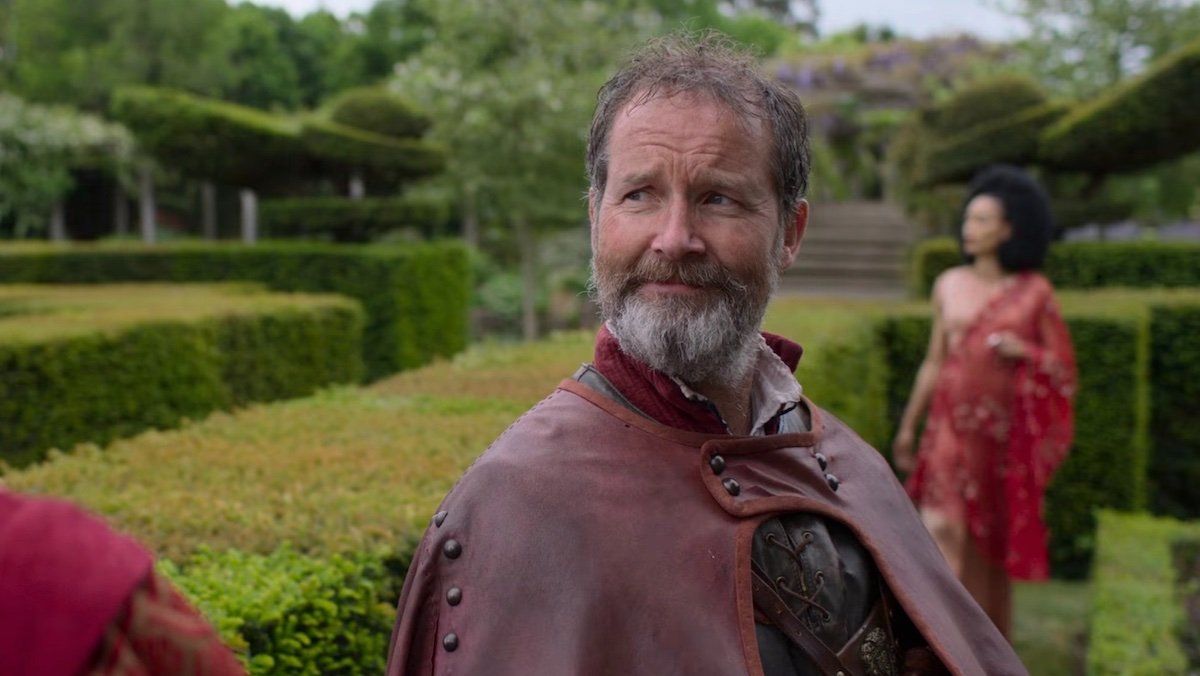
The way The Witcher season 3 handles the character Aplegatt, the Redanian messenger, and the circumstances surrounding his death represents the third most significant deviation from the original book series. The show, while still providing a compelling narrative, does not fully capture the power and the depth of Aplegatt’s story as artfully portrayed by Andrzej Sapkowski in his book Time of Contempt.
In the book, Aplegatt’s journey serves as a standalone tale within the overarching narrative, providing readers with an insightful and comprehensive understanding of the political climate in the Witcher universe. His journey, riddled with danger and intrigue, provides essential context and depth to the statuses of the characters in the series.
The climax of his tale comes with his brutal death at the hands of a Scoia’tael member named Toruviel. This event is not only shocking but also significant, carrying with it vast consequences and perfectly encapsulating the primary themes and tensions present in the book.
The Netflix series, however, chooses to present Aplegatt’s scenes in a fragmented way, scattering them across multiple episodes. While this approach maintains the essence of his tale, it somewhat dilutes the overall impact of his story and the power of his death. Instead of a focused narrative arc, his story becomes fragmented and less impactful.
Moreover, the dramatic tension of Aplegatt’s death scene, as he yells out his secret message in his dying moments, does not hit as hard in the show as it does in the book. The scene lacks the suspenseful and thrilling atmosphere present in the book, rendering it less impactful.
His death, which should have been a significant and memorable moment in the narrative, becomes fleeting and less memorable in the TV series, which is a disappointment when compared to the book’s vivid and unforgettable portrayal. This deviation is one of the reasons why some fans consider the handling of Aplegatt’s character and story as a missed opportunity in The Witcher season 3.
Hit: More Monster Encounters
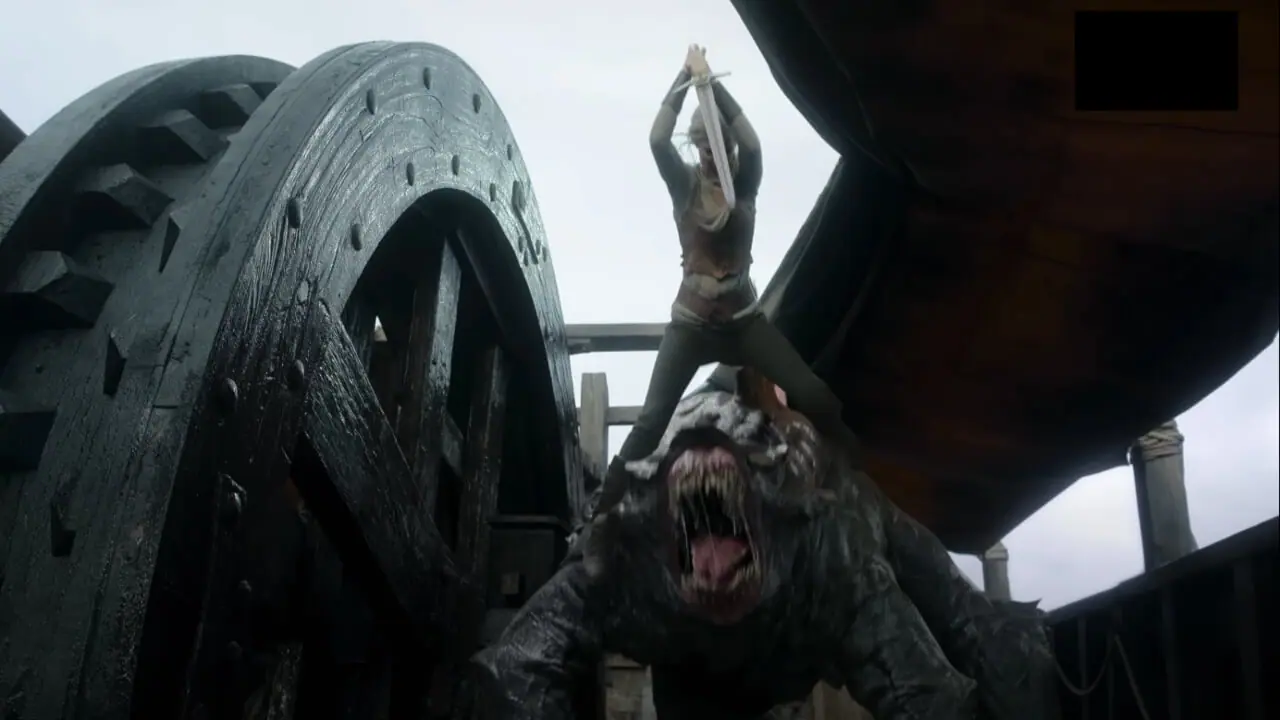
The Witcher at its heart is a thrilling tale about a mutant named Geralt of Rivia, who earns his keep by hunting down fearsome creatures. Hence, it’s only natural for audiences tuning in to the series to anticipate a fair share of monster encounters. While the original book series by Andrzej Sapkowski, particularly during the timeframe encompassed by season 3, features a significant shift in focus.
Instead of monster hunts, it delves deeper into the intricate political scheming on the Continent. Consequently, encounters with monstrous creatures become limited, and rather sporadic.
However, there are a few exceptions where the books introduce some thrilling confrontations with monstrous beings. For instance, we see young Ciri, bravely battling a terrifying basilisk. Also, during her perilous journey through the desolate Korath desert, she encounters a few strange and fearsome creatures.
It’s interesting to note though that in Time of Contempt, the book upon which season 3 draws heavily, Geralt of Rivia, renowned monster hunter, does not engage in a single monster fight. This is a stark departure from his usual engagements and activities.
The creators of the Netflix series, however, recognize the audience’s desire for monster battles and ensure that these exciting engagements form a vital part of the narrative. Geralt and Ciri, in their quest, come face-to-face with several monstrous adversaries, adding exciting layers to their journey.
Together, they skillfully combat an aeschna, an aquatic monster, showcasing their impressive combat skills. Geralt, in another thrilling episode, faces off against a fearsome rolling jackapace, a scene filled with suspense and raw action.
These monster encounters featured in season 3 are undoubtedly among some of the show’s best, standing out for their stunning visuals, intricate choreography, and sheer intensity. In this regard, the show deviates quite significantly from the source material.
Instead of strictly adhering to the books’ monster-less narrative during this period, the series chooses to cater to the audience’s expectations, offering them a healthy dose of monster-fighting action. This difference, while significant, adds to the visual appeal and excitement of the series, making it more engaging for viewers.
Miss: Portrayal of the Professor and His Gang’s Death
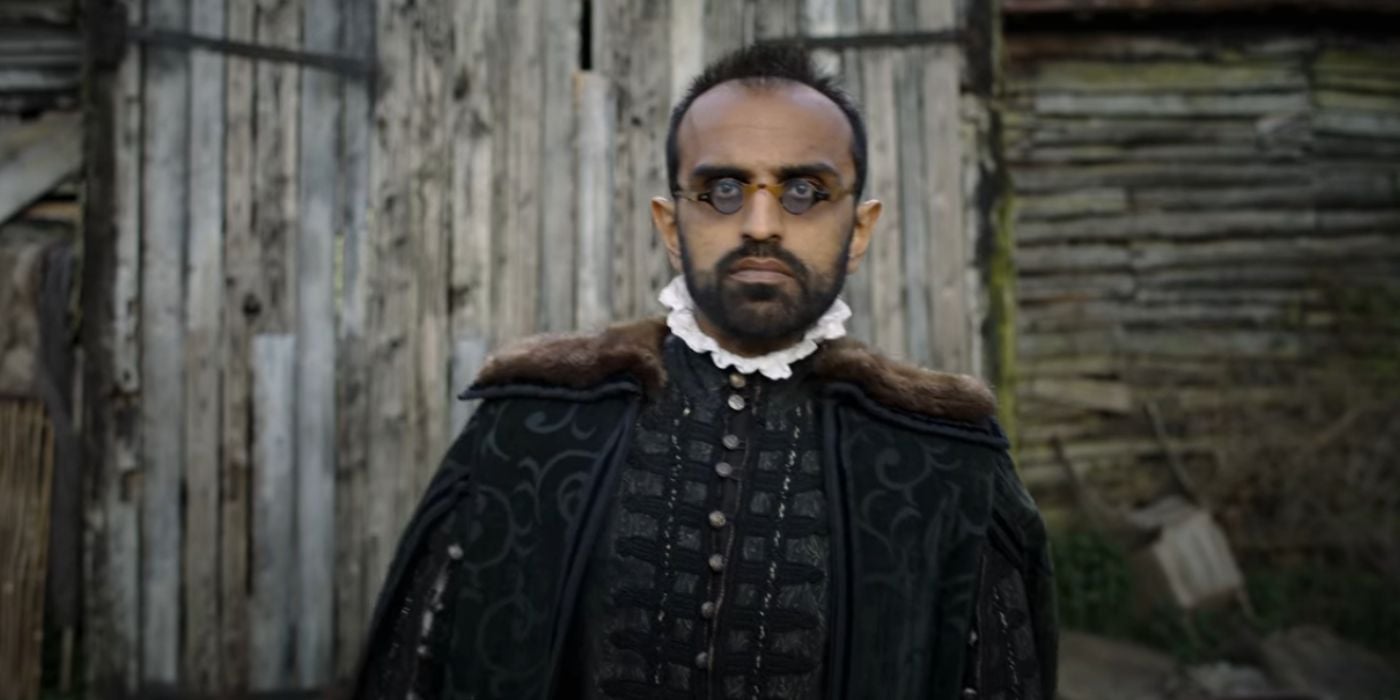
The opening act of The Witcher Season 3 introduces a band of mercenaries on a relentless quest to capture Ciri. They are headed by a formidable individual known as the Professor. However, they grossly underestimate the power and skill of Geralt of Rivia, who crosses their path and takes them down with exceptional efficiency.
This showdown is not just another fight scene in the series. It’s a pivotal moment in both the show and its source material, Time of Contempt, that serves as a testament to Geralt’s combat prowess and his determination to protect Ciri. However, the original book by Andrzej Sapkowski paints this event with much richer and more dramatic hues, making it far more memorable and impactful than the TV series’ portrayal.
In the novel, the Professor and his crew are depicted as a grave threat. They are characterized as highly dangerous individuals, even surpassing the Michelet Brothers in terms of the danger they present. The Michelet Brothers, as fans will recall, were formidable foes whom Geralt had successfully overcome in the first season. So, when the Professor and his mercenaries are portrayed as an even greater danger, it increases the stakes of the impending clash, creating a palpable tension.
This tension comes to a head in the scene set in an inn. Here, Geralt, always the reluctant warrior, offers the mercenaries a chance to walk away peacefully or face certain death. This pivotal moment, filled with tension and suspense, is much more dramatic in the book than how it’s shown in the TV adaptation.
In the novel, the mercenaries’ decision to fight Geralt despite his warning, and their subsequent brutal defeat, is witnessed by a terrified Redanian messenger named Apelgatt. This adds another layer of drama and depth to the scene. The feeling of dread, the intensity of the confrontation, and the catastrophic outcome leave an indelible impression on readers.
On the other hand, the TV series’ version of this scene, while visually impressive, fails to capture the same level of tension and drama. It’s a more simplified rendition, which although entertaining, doesn’t convey the raw intensity or the high stakes of the original scene in the book. As a result, it doesn’t quite carry the same dramatic weight or leave as lasting an impression as it does in Sapkowski’s text.
Hit: Expanding the Search for Rience’s Employer
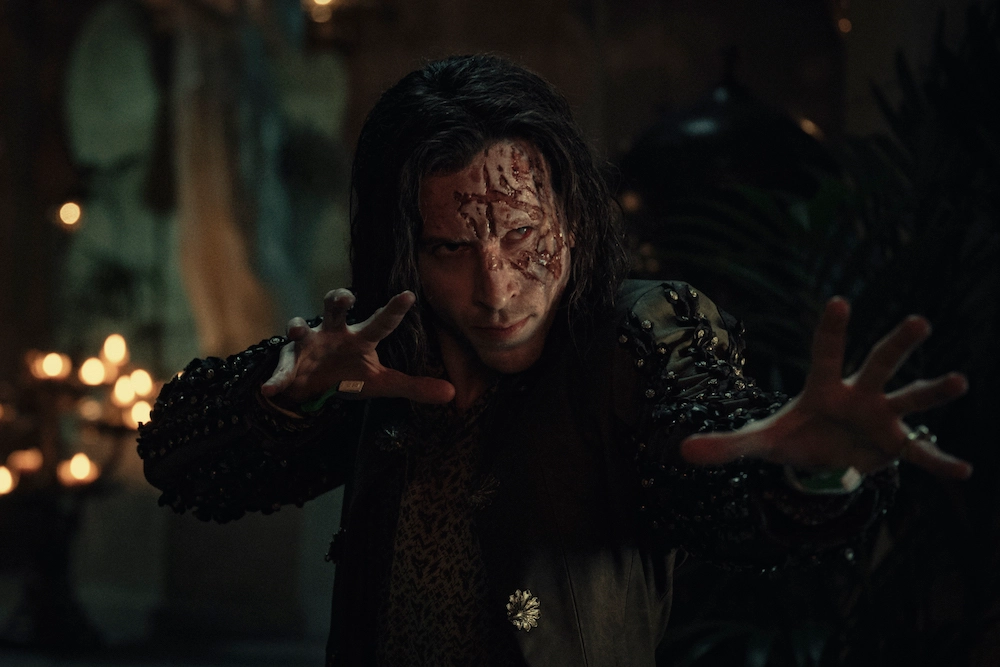
In the third season of The Witcher, a crucial storyline unfolds as Geralt and Yennefer doggedly pursue the shadowy figure employing Rience. Rience, the intimidating fire mage, has been hot on Ciri’s heels since the series’ second season.
Both Rience and his mysterious employer, who is later revealed to be the formidable Vilgefortz of Roggeveen, are characters drawn from the original book series. However, the TV adaptation takes this plot thread and weaves it into a more intensified and suspenseful mystery.
This season, which takes much of its inspiration from Andrzej Sapkowski’s novel, The Time of Contempt, extends the narrative surrounding the quest to find Vilgefortz. It takes this storyline and spins it into a series of remarkably captivating scenes, generating suspense and keeping viewers on the edge of their seats.
One such memorable moment comes when Geralt finds himself face to face with a monstrous creature in the forsaken castle of Vulipanne. This intense confrontation, filled with tension and dread, is a standout scene in the season. It serves to remind us of the dangers that Geralt and his companions face in their quest and the formidable powers that their adversaries possess.
In another deeply touching scene, Geralt learns about his mother’s death from Anika, a wise and kind druid. This revelation adds a layer of emotional depth to Geralt’s character and provides viewers with insight into his past and his trials. It’s a poignant moment that strikes a deep emotional chord and enriches the series’s narrative.
The decision to slowly unravel Vilgefortz’s terrifying capabilities before unveiling his identity is an excellent narrative choice. This approach enhances the sense of threat and danger associated with the character. It lays a solid foundation for upcoming storylines, such as introducing a Ciri imposter in Nilfgaard toward the season’s conclusion.
The series keeps viewers intrigued and hooked by providing a steady drip feed of information and maintaining an air of suspense around Vilgefortz. This amplified sense of mystery and threat makes this plot arc in The Witcher Season 3 all the more engaging and entertaining.
Miss: Rience’s Premature Death
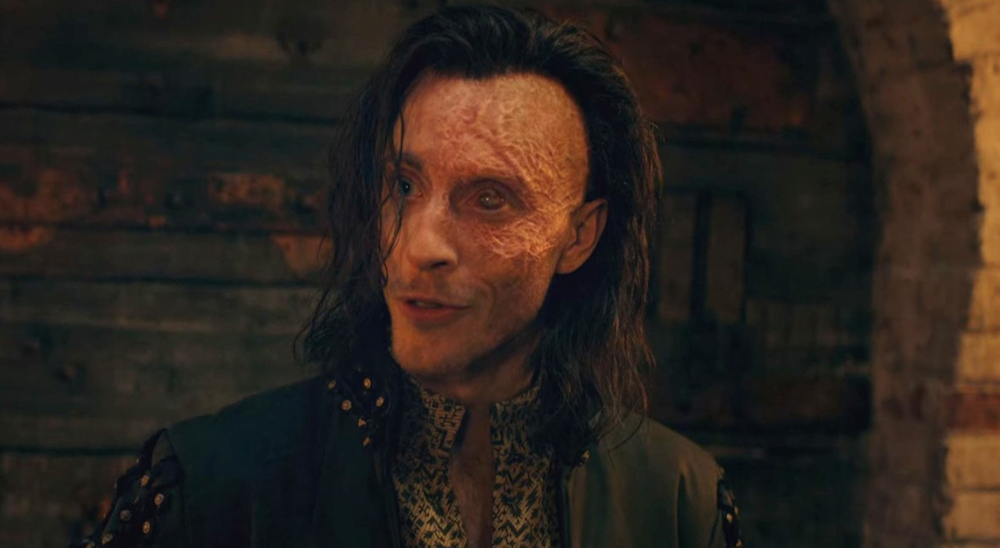
In the third season of The Witcher, the character of Rience, the menacing fire mage, takes on a more prominent role than he does in Andrzej Sapkowski’s novel The Time of Contempt. However, the series cuts Rience’s narrative arc short, leading him to an untimely end. Amid the tumultuous events of the coup on Thanedd Isle, Rience finds himself cornered by Ciri and Yennefer.
However, he is swiftly dealt with by Geralt, who steps in to protect his friends, causing Rience to become yet another body on the blood-soaked battlefield.
This starkly contrasts the novel series, where Rience’s story extends much further. His presence lingers until the second-to-last book, The Tower of Swallows. In this chilling installment of the series, Rience meets a chilling end in the icy waters of a frozen lake, a fate that leaves a strong impression on readers.
The show makes an effort to pay homage to the books, incorporating references to events from the novels into Rience’s narrative. For instance, a memorable book moment is recreated when Ciri cuts off several of Rience’s fingers in a tense confrontation. However, these nods to the source material notwithstanding, the show’s portrayal of Rience’s storyline diverges quite significantly from the books.
In the novels, Rience’s character is given more room to develop, allowing readers to appreciate his role as a villain truly. His prolonged presence adds to the narrative tension, making his eventual downfall all the more impactful.
However, considering the narrative trajectory of the series and the impending introduction of other formidable foes, such as the ruthless bounty hunter Leo Bonhart, it’s easy to understand why the series chose to shorten Rience’s storyline. Although his early death may feel abrupt to some viewers, it can be seen as a necessary narrative decision that paves the way for new adversaries and plot developments in future seasons.


